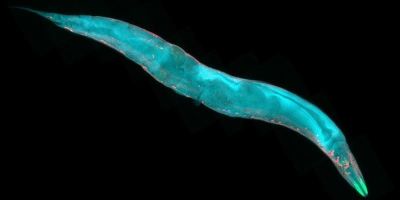New technique could transform low-energy light detection
Researchers have discovered a way to use standard semiconductors to detect light over a much broader range of wavelengths.
The technology, developed by a team of scientists at Georgia State University and the Faculty of Engineering at Leeds, opens new possibilities in solar power generation and low-energy light detection.
Edmund Linfield, Professor of Terahertz Electronics in the University of Leeds' School of Electronic and Electrical Engineering, whose team built the patterned semiconductors used in the new technique, said: “Generating electric current from the lower energy ranges of the electromagnetic spectrum, such as infrared, is very challenging using semiconductor materials because the wavelengths involved provide little energy. We are extremely excited about finding a way to address this problem.”
Professor Linfield added: “The pay-offs are potentially very significant – from more efficient use of solar energy by utilizing a larger portion of the spectrum to developing new types of detector for use at long wavelengths.”
Until now, one of the solutions to the challenge of detecting low-energy light has been to find special semiconductor materials that respond to it.
The new approach, published in the April issue of Nature Photonics, takes a different tack, overcoming the challenges by adding a second light source.
The added light primes the semiconductor with energy, like a warm-up act for a comedian, so that when the low-energy wavelengths arrive they can generate a current.
Because the technique extends the range of existing semiconductors rather than relying on novel materials, it offers the potential for wafer-scale integration with electronic devices.
The improved device can detect wavelengths up to at least the 55 micrometer range. Previously, the same detector could only see wavelengths of about 4 micrometers. The team has run simulations showing that a refined version of the device could detect wavelengths up to 100 micrometers long.
Professor Unil Perera, head of Georgia State University’s Optoelectronics Research Laboratory, which led the study, said: “This technology will also allow dual or multiband detectors to be developed, which could be used to reduce false positives in identifying – for example – toxic gases.”
The work was supported by the US Army Research Office, the U.S. National Science Foundation, the UK’s Engineering and Physical Sciences Research Council (EPSRC) and a European Research Council grant, TOSCA. Professor Perera and Yan-Feng Lao, the lead researcher on the study, have filed a U.S. patent application for the detector design.
Further information
The full paper: “Tunable hot-carrier photodetection beyond the band-gap spectral limit,” by Yan-Feng Lao, A.G. Unil Perera, L.H. Li, S.P. Khanna, E.H. Linfield and H.C. Liu is in the April issue of Nature Photonics (DOI: 10.1038/NPHOTON.2014.80; URL: http://dx.doi.org/10.1038/NPHOTON.2014.80).
Related Articles
Photonics.com - Second Light Source Primes Semiconductors to See IR




